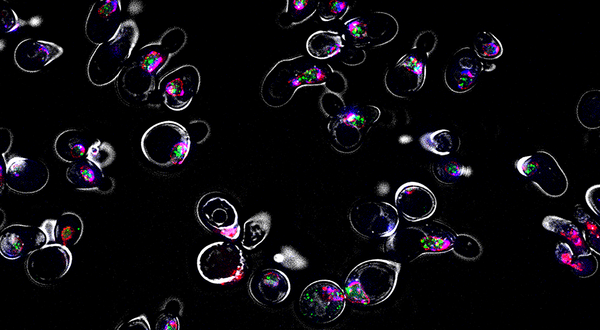Hallmark of ageing: Damage to the DNA
Our genetic material is constantly at risk
The DNA in each of our cells is damaged around 100,000 times every day. That's an average of more than once per second! Since we are made up of over 1013 cells, this adds up to an incredible 1018 damages to our DNA every day – that’s 1 with 18 zeros. Damage to our DNA is caused, for example, by UV light or natural and artificial substances that we ingest with our food.
The better the DNA repair, the longer the lifespan
Among mammals, the species that accumulate the least damage live the longest. These include horses and naked mole rats, for example. We humans are best at repairing damage when we are young. Nevertheless, DNA damage in our cells is repaired less and less well over time and accumulates. This is one of the main causes of ageing.
DNA repair is very complex
There are many types of DNA damage: the DNA can break on one strand only (single-strand break), break on both strands (double-strand break) or be altered by chemical reactions. A specialised repair process is available for each type of damage. More than 150 genes are involved. Which repair process is activated when and how these processes work together is the focus of our research. To this end, Mainz has established the largest research network in Germany in the field of DNA repair.
Permanent DNA damage contributes to ageing
Cells with genomes that are too damaged to be repaired stop dividing. They die or become "senescent" - a condition in which they trigger inflammation in the body and disrupt the function of other cells. This drives the ageing process. If genes with important functions are damaged, the resulting mutations can also lead to cancer and contribute to other age-related diseases such as Alzheimer's disease.
The importance of DNA repair in ageing is made even clearer in rare diseases where patients age much faster than normal. These diseases, known as progerias, include Werner syndrome and Hutchinson-Gilford progeria syndrome. Their main causes are defects in DNA repair genes or disruptions in the structure of the DNA. Patients show ageing symptoms which normally only occur from around the age of 65 at a very young age (less than 30 years old) in many organs and tissues, such as the skin and heart.
Healthier ageing by supporting DNA repair
If we could better understand the complex interplay of DNA repair, we could support the DNA repair processes that decline with age and make them more precise and efficient. This could reduce our risk of developing cancer or Alzheimer's disease. Patients suffering from progeria could also benefit from reactivation of the defective DNA repair pathways in their cells.

